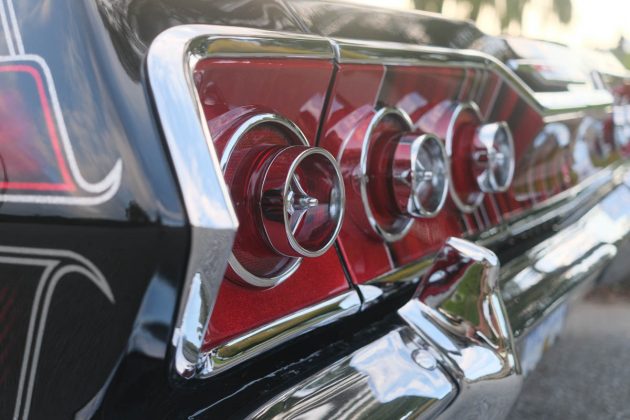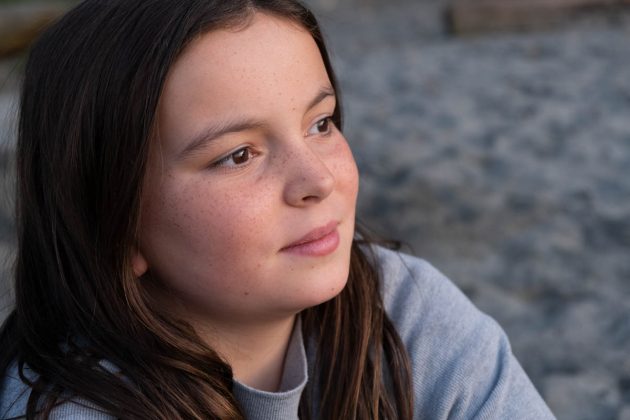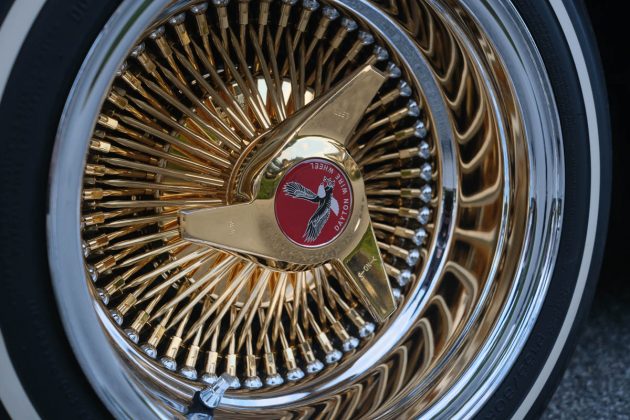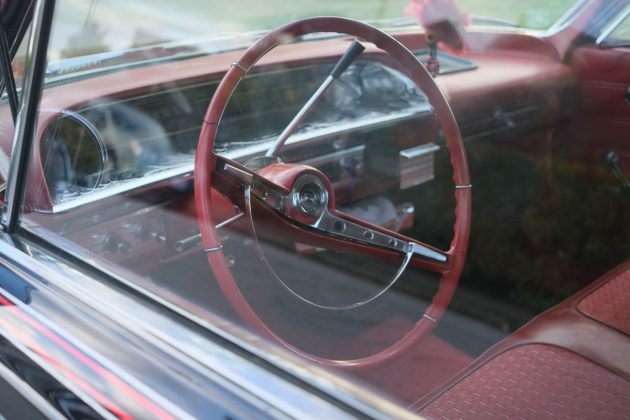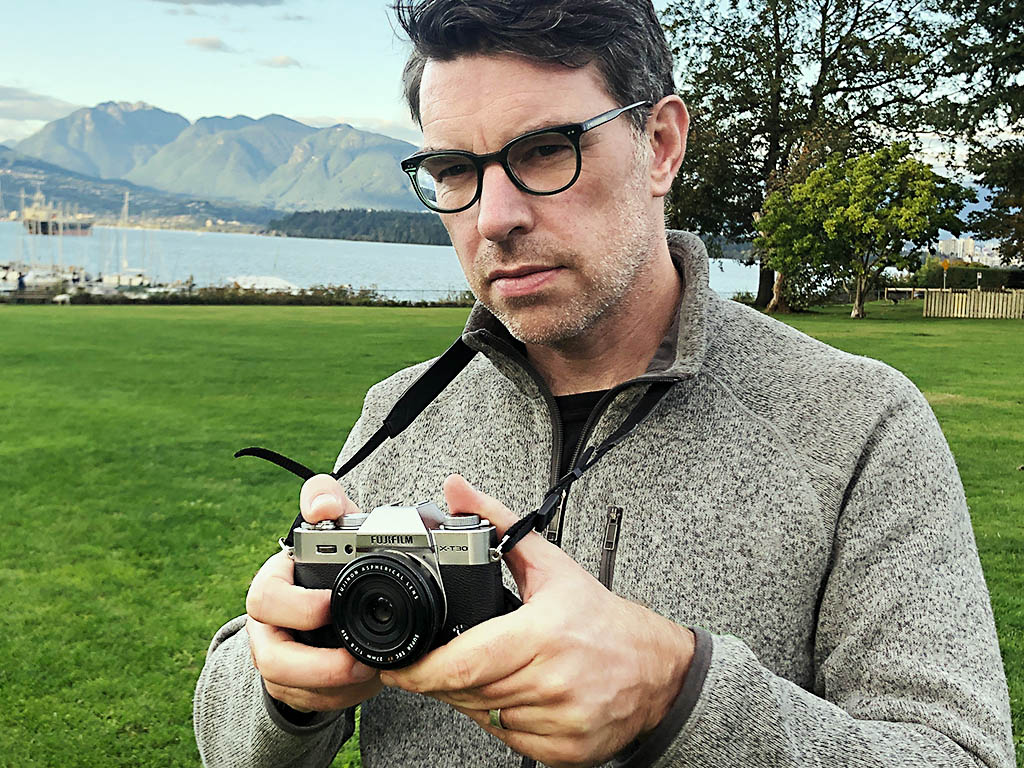
The Fujifilm X-T30 is a compact mirrorless camera with an 26 megapixel X-Trans CMOS 4 APS-C sensor, which essentially means it has a large, cutting-edge sensor, in the tradition of other Fujifilm sensors which have delivered fantastic image quality in the past. The X-T30 is capable of shooting up to 30 frames per second, at a maximum ISO of 51200. It can shoot 4K video at 200Mb/s, which is remarkable and bound to impress all the videographers out there.
The X-T30 is a thing of beauty
I have to confess up front that I am a big fan of Fujifilm cameras and I have been for a while. Fujifilm has built an impressive line up of cameras and have consistently sought to push the boundaries of what we should expect from a mirrorless camera. As well as delivering on the functional side of things, they have also delivered on the form side. The X-T30 is a gorgeous piece of design and a beautiful object in and of itself.

Fujifilm is for purists
When I think about Fujifilm cameras I have an immediate association with pure photography; the act of using the camera in an intentional and focused way. Lots of people own cameras and use them haphazardly, and usually in automatic mode. Fujifilm cameras are designed to allow you to work efficiently in manual mode and easily control your basic settings. The X-T30 gives you a shutter speed dial on top of the camera, as well as an exposure compensation dial. On the front of the camera you have a switch that allows you to easily move between manual focus, continuous focus and single focus.
That being said, the X-T30 does make a concession to casual users with the addition of a little “Auto” switch next to the shutter speed dial which allows you to shoot in automatic mode where the camera will choose your settings for you.

The X-T30 vs the X-T3
Having recently reviewed the Fujifilm X-T3, it didn’t take long before I was scratching my head and asking myself “what exactly is the difference between these two cameras?” To find out I actually had to ask the internet, and as I suspected they are indeed very, very similar cameras, at least in terms of functionality. The X-T3 is a bulkier, more solid camera with a larger grip for your hand. It also has an extra dial on top for ISO. It comes with dual card slots instead of the single slot of the X-T30. The X-T30 however has a pop-up flash which the X-T3 lacks. There are some other differences between the two, including the fact that you can’t get a battery grip for the X-T30, but the fact they are so similar is a big plus for anyone investing in the X-T30, a significantly cheaper camera.
Essentially I would say that professionals are likely to veer towards the X-T3, whereas enthusiasts will see the value in the X-T30.
Read my full review of the Fujifilm X-T3 here
An impressive kit lens
I received the X-T30 with the XF 18-55mm f/2.8-4 R LM OIS lens. Now I don’t often get excited about the kit lenses that come packed with cameras. In fact, I’ve been known to describe them as expensive paperweights. This XF 18-55mm however, is a proper lens. Not quite professional standard, but good nonetheless. One of the things I like about it is the fact that it has an aperture control ring right there on the barrel. This is another great way that Fujifilm allows you to take control of your settings in a very ergonomic way. It comes with image stabilization, which unfortunately is not included in the body itself.
One of the key reasons I would not consider this a professional lens is the fact that it has a variable maximum aperture, which varies between f/2.8 and f/4 depending on the focal length. As a professional, I need a lens that can maintain a constant minimum aperture through every focal length, like this XF 16-55mm f/2.8 R LM WR lens. You will pay a premium for a lens like that but hey, c’est la vie.

The X-T30 has a touchscreen
I’m so glad we’re finally seeing touchscreens become standard features on mirrorless cameras. With the X-T30 you can use the LCD screen to pick your focus point, or you can use it to shoot photos simply by tapping the screen. The camera will even refocus to the point you tap on. This is a great feature for shooting sports, for example, and you can also shoot a burst of images by keeping your finger pressed to the screen, provided you are in “CH” or “CL” mode (continuous high speed or continuous low speed).
One other cool feature of the X-T30 screen in continuous mode is that it offers a blackout-free live view of the scene, so your view is uninterrupted as you shoot. It also continues to track autofocus and give you auto exposure if you want.
The touchscreen is also useful when you review your images as you can use two fingers to zoom in, and swipe left and right between images. You can’t use the touchscreen to navigate the menus however, but you can use it to change options in the quick menu, which is great.

Switch between touchscreen and viewfinder
As well as the touchscreen, the X-T30 has an excellent 2.36 megapixel viewfinder. You can choose to use either the viewfinder or the LCD screen exclusively, or you can enable the eye detect feature which switches from the LCD screen to the viewfinder when you bring your eye to the camera. One downside of this feature that I discovered was that the sensor is a bit too sensitive, and it is often triggered when you’re using the LCD screen to change settings in the quick menu, so the screen goes black all of a sudden. Although a small gripe, I actually found this pretty annoying after a while. Check out the video and you’ll see what I mean.
All in all, I have to say that the X-T30 is one of the best cameras I have reviewed in a while, given all the features that are packed into that small, beautifully designed body. There is so much more for you to discover than I have time to go into here, but trust me—if you love photography, you will love the Fujifilm X-T30.
Check out the full range of Fujifilm mirrorless cameras available at BestBuy.ca

